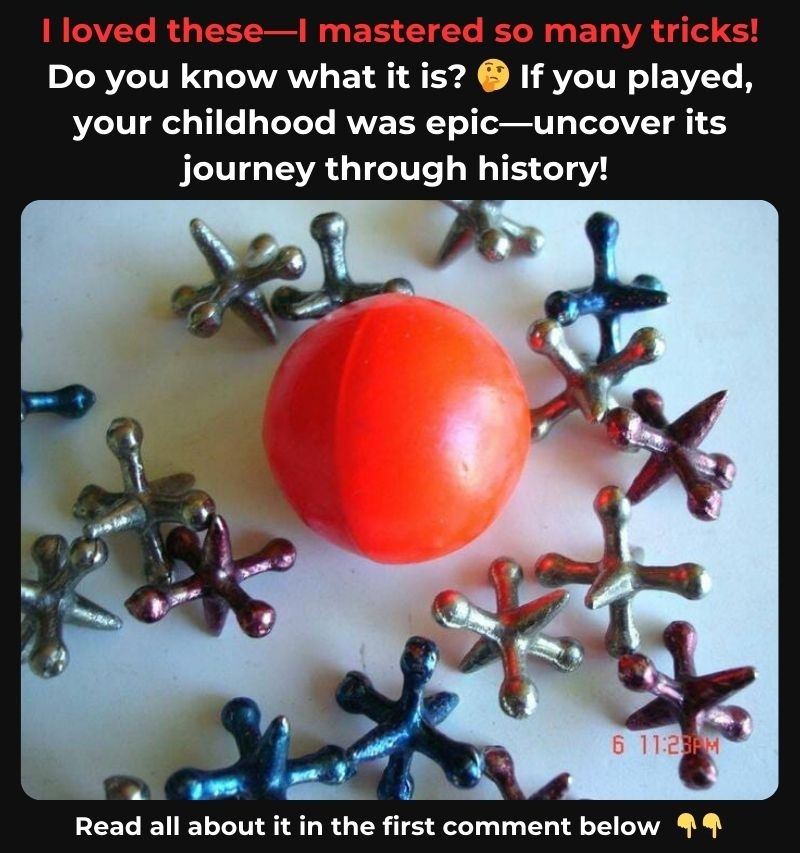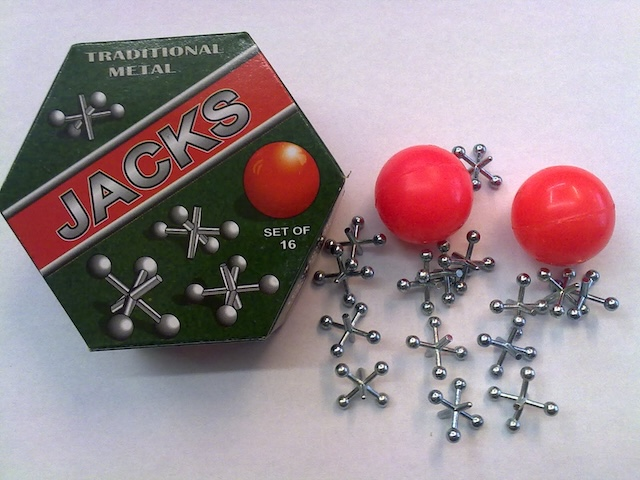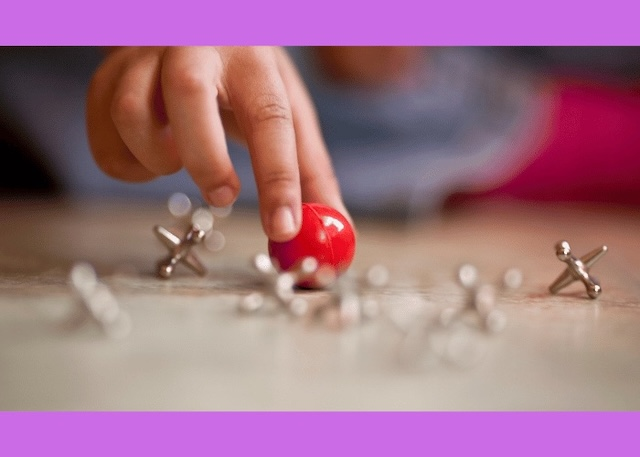Before kids were glued to tablets and gaming consoles, playtime looked a whole lot different. There was no Wi-Fi, no touchscreen—and yet, laughter filled the streets, and imagination ran wild. Among the most beloved pastimes? A small set of metal stars and a bouncy rubber ball: the vintage Jacks toy, also known as Knucklebones. If you remember playing it, chances are your childhood was full of scraped knees, giggles, and fierce neighborhood competitions.
Let’s take a step back in time and explore the fascinating history of this timeless toy.

From Ancient Knucklebones to Playground Legend
Believe it or not, the game of Jacks didn’t start in the 20th century—or even the 19th. It goes way back. We’re talking ancient Greece, Rome, and even Mesopotamia. And guess what? The original pieces weren’t shiny metal jacks at all. They were actual knucklebones from animals—yes, real bones!
Back then, kids (and even adults) would toss these bones in the air and try to catch them in different ways. It wasn’t just a game—it had spiritual and symbolic meaning. In Greek mythology, the gods supposedly played knucklebones to pass time and determine fate. Talk about divine entertainment.
The game was later adopted and adapted by the Romans, who spread it across Europe. Through the centuries, it evolved into something more recognizable—eventually becoming the Jacks set many of us played with as kids.
Video: How to Play Jacks
The Rise of the Classic Jacks Toy
By the mid-1900s, Jacks had gone from knucklebones to shiny, molded metal pieces and rubber balls. The toy exploded in popularity, especially during the 1940s and 1950s. Why? Because it was cheap, portable, and endlessly fun.
You didn’t need electricity or expensive gear. Just a flat surface, a few friends, and a quick pair of hands. Jacks became a staple of childhood across cities, suburbs, and small towns. Every kid had their own version of the game. Some played “onesies, twosies,” while others invented rules on the fly to spice things up.
It wasn’t just about winning—it was about improving reflexes, building friendships, and passing long summer afternoons in the best way possible.
How the Game Was Played

If you’ve never tried it, here’s how the classic version works:
Scatter the jacks on the ground. Toss the rubber ball into the air. Before the ball bounces once and comes back down, you try to grab one jack, then two, then three, and so on—without missing the ball.
Miss the catch or fumble a jack? Your turn’s over.
Sounds easy, right? Wrong. It’s way trickier than it looks. You need lightning-fast reflexes, hand-eye coordination, and tons of patience. And that’s why the game was so addictive—you were always chasing a smoother, quicker round.
Why Jacks Meant More Than Just Fun

Sure, it was a game. But it was also a social glue. Kids played Jacks during recess, on sidewalks, at kitchen tables, and on dusty porches. It didn’t matter if you were rich or poor—everyone could play. All you needed was a small set, which often cost less than a candy bar.
It was also a game that crossed generations. Parents taught their kids. Siblings passed it down. It was a beautiful example of how simple joy transcends time and tech.
In fact, during hard times—like the Great Depression or World War II—Jacks remained popular because it was an easy escape. No batteries. No screens. Just fun you could carry in your pocket.
Cool Facts You Probably Didn’t Know
- War-Time Comfort: During WWII, the Jacks toy offered comfort to kids in war-affected areas. Lightweight and cheap, it became a favorite morale booster.
- Global Variations: Different cultures had their own twist. In Korea, the game is called gonggi. In India, it’s five stones. In each version, the goal is the same: beat the ball and beat the odds.
- Olympic Aspirations: Ancient Greeks almost made it an Olympic event. It didn’t make the final cut—but hey, it had divine approval from the gods, so that counts for something.
- Hall of Fame Recognition: In 2000, Jacks earned its rightful spot in the National Toy Hall of Fame. Well deserved, we’d say.
The Slow Fade of a Classic
Video: Ramini Brands Classic Ball And Metal Jacks Game Set
Unfortunately, like many analog games, Jacks began fading from the spotlight by the 1980s and ’90s. The rise of video games and television meant fewer kids were playing outdoors, and traditional toys took a back seat.
But all is not lost. Vintage Jacks sets are now hot collector’s items. Parents are reintroducing the game to their children. Toy companies are even re-releasing retro-style versions, proving that everything old really does become cool again.
Why It Still Matters Today
In a world obsessed with speed and digital noise, Jacks offers something rare: slowness, simplicity, and skill. It’s not flashy. It’s not competitive in the esports sense. But it’s timeless.
Teaching a child to play Jacks today is like handing them a small piece of history—and watching them realize that great games don’t need screens or updates. They just need heart.
Conclusion: A Timeless Game with Endless Bounce

The vintage Jacks toy, or Knucklebones, isn’t just a nostalgic object—it’s a legacy. It represents a time when joy was found in the simplest things. A ball. A few pieces of metal. And a challenge that brought kids together.
Whether you played it decades ago or are just discovering it now, the spirit of Jacks lives on. It teaches patience, sharpens focus, and—best of all—connects us across time.
So the next time you come across a weathered old set, pick it up. Toss the ball. Catch a jack. Feel the rhythm. And remember a world where play was as real as the smile it left behind.


